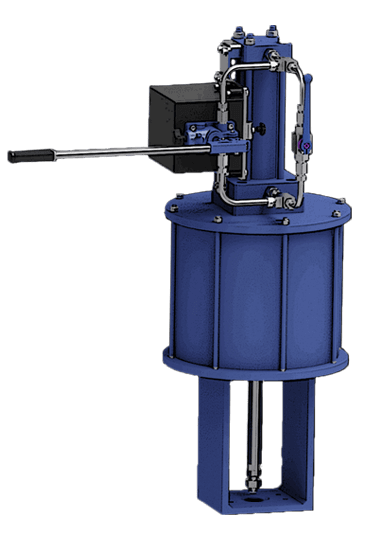In the realm of mechanical engineering and automation, the term "linear actuator" holds immense significance. As a fundamental component of various systems, linear actuators are crucial for converting rotational motion into linear motion, facilitating precise control and movement across a wide range of applications. This article delves into the mechanics, types, and diverse applications of linear actuators, showcasing their indispensable role in modern industries.
Understanding Linear Actuators
A linear actuator is a mechanical device designed to create straight-line motion or force by transforming rotary motion from a motor into linear displacement. This conversion is achieved through various mechanisms, such as screws, belts, gears, or direct-drive systems. Linear actuators play a pivotal role in countless industries, including manufacturing, automotive, aerospace, robotics, medical equipment, and home automation.
 |
| Industrial linear actuators by Freture Techno Pvt. Ltd. |
Mechanics and Types
Linear actuators come in a variety of designs, each tailored to specific needs and operational requirements. Some of the most common types include:
Screw-Driven Actuators: These actuators use a threaded screw mechanism to translate rotational motion into linear motion. They are known for their precision and ability to handle heavy loads, making them suitable for applications like CNC machines, 3D printers, and industrial automation.
Belt-Driven Actuators: Belt-driven actuators employ a belt or pulley system to convert rotary motion into linear movement. They are valued for their speed and relatively quiet operation, finding applications in packaging machinery and conveyor systems.
Linear Motor Actuators: Linear motor actuators use electromagnetic fields to generate linear motion directly, eliminating the need for mechanical linkages. They offer high precision, rapid acceleration, and exceptional control, making them ideal for robotics, semiconductor manufacturing, and precision machining.
Piezoelectric Actuators: These specialized actuators utilize the piezoelectric effect to create motion by applying an electric field. They are utilized in nanotechnology, microscopy, and fine-positioning applications that demand sub-micron accuracy.
Applications Across Industries
The versatility of linear actuators has led to their integration in a wide array of industries and applications:
Manufacturing and Automation: Linear actuators are the backbone of assembly lines, robotics, and CNC machines, enabling precise movement and control during manufacturing processes.
Medical Equipment: They play a critical role in medical devices such as MRI machines, surgical robots, and prosthetics, ensuring accurate and controlled motion.
Aerospace and Defense: Linear actuators are used in aerospace applications, including satellite deployments, aircraft landing gear, and missile guidance systems.
Automotive: In vehicles, linear actuators power functions like electric windows, adjustable seats, and convertible tops, enhancing user comfort and convenience.
Home Automation: Linear actuators are behind the automated movement of doors, windows, solar panels, and even smart furniture.
Future Innovations and Conclusion
As technology continues to evolve, so do linear actuators. Advancements in materials, electronics, and control systems are enabling more compact, efficient, and versatile linear actuators. The integration of sensors and smart technologies allows for real-time monitoring and adaptive control, further expanding their potential applications.
In conclusion, linear actuators serve as the unsung heroes of modern engineering, translating rotational energy into linear motion to drive innovation across industries. From precision manufacturing to cutting-edge medical advancements, these mechanical marvels are the driving force behind countless technological achievements, continually pushing the boundaries of what is possible.
In a world where precise movement is paramount, linear actuators stand as a testament to human ingenuity, propelling us into a future defined by accuracy, efficiency, and boundless possibilities.

No comments:
Post a Comment